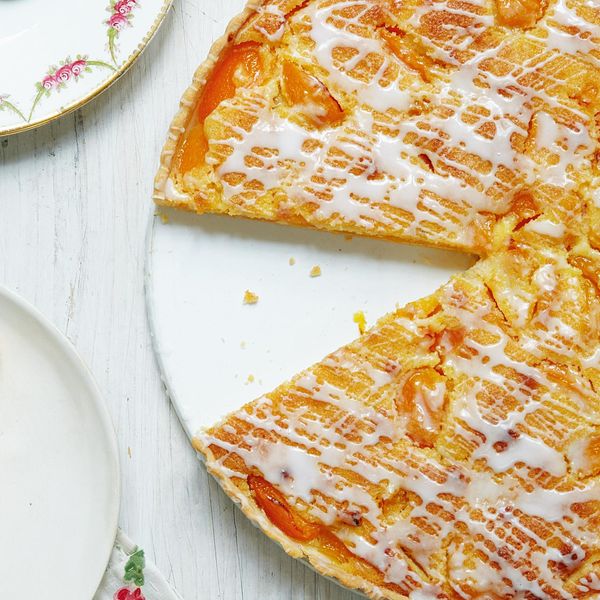Mary Berry's Apricot Frangipane Tart
Your folders
Your folders
Servings: 9
Cost: $4.55 /serving
Author : Mary Berry

Ingredients
Export 12 ingredients for grocery delivery
Instructions
1 You will need a 28cm (11in) round, loose-bottomed fluted tart tin, 3–4cm (1¼–1½in) deep. Preheat the oven to 190°C/170°C fan/ Gas 5, and slip a heavy baking sheet inside to heat up. 2 First make the pastry, either by mixing the flour and butter in a food processor or by hand – rubbing the flour and butter together with your fingertips, until the mixture resembles breadcrumbs. Add the sugar and mix in briefly, then add the egg and ½–1 tablespoon of water. Mix until the dough just holds together. 3 Roll the pastry out on a floured surface as thinly as possible, 1–2mm (1/16in) thick, and use to line the tin, making a small lip around the top. Prick the base of the pastry all over with a fork. 4 Next make the frangipane filling. Place the butter and sugar in the food processor (no need to wash this out first) and whizz until creamy, blend in the eggs, then mix in the ground almonds and almond extract. Alternatively, beat together with a wooden spoon if making by hand. 5 Arrange the apricot slices over the base of the pastry and spoon the frangipane mixture on top, spreading it evenly to cover the apricots. 6 Sit the tart tin on the hot baking sheet, and bake in the oven for 45–50 minutes until the pastry is crisp and the tart is golden brown. 7 To finish, make a glacé icing by mixing together the icing sugar and apricot juice, adding enough juice to give a pouring consistency and for the icing to hold its shape. Using a spoon, zigzag the icing over the tart and leave to set. 8 Remove the tart from the tin and transfer to a serving plate. Serve warm or cold. TIPS: Sprinkling extra ground almonds on the cooked pastry base before adding the apricots helps to absorb extra moisture. The apricots need to be as dry as possible to prevent the juice soaking into the pastry. Dry each one individually with kitchen paper. An easy way of removing the tart from the tin is to stand the tart tin on one or two tins or jars; the ring around the tart can then be lowered to your work surface, leaving the tart on the base of the tin. Slide the tart off the base on to a serving plate.